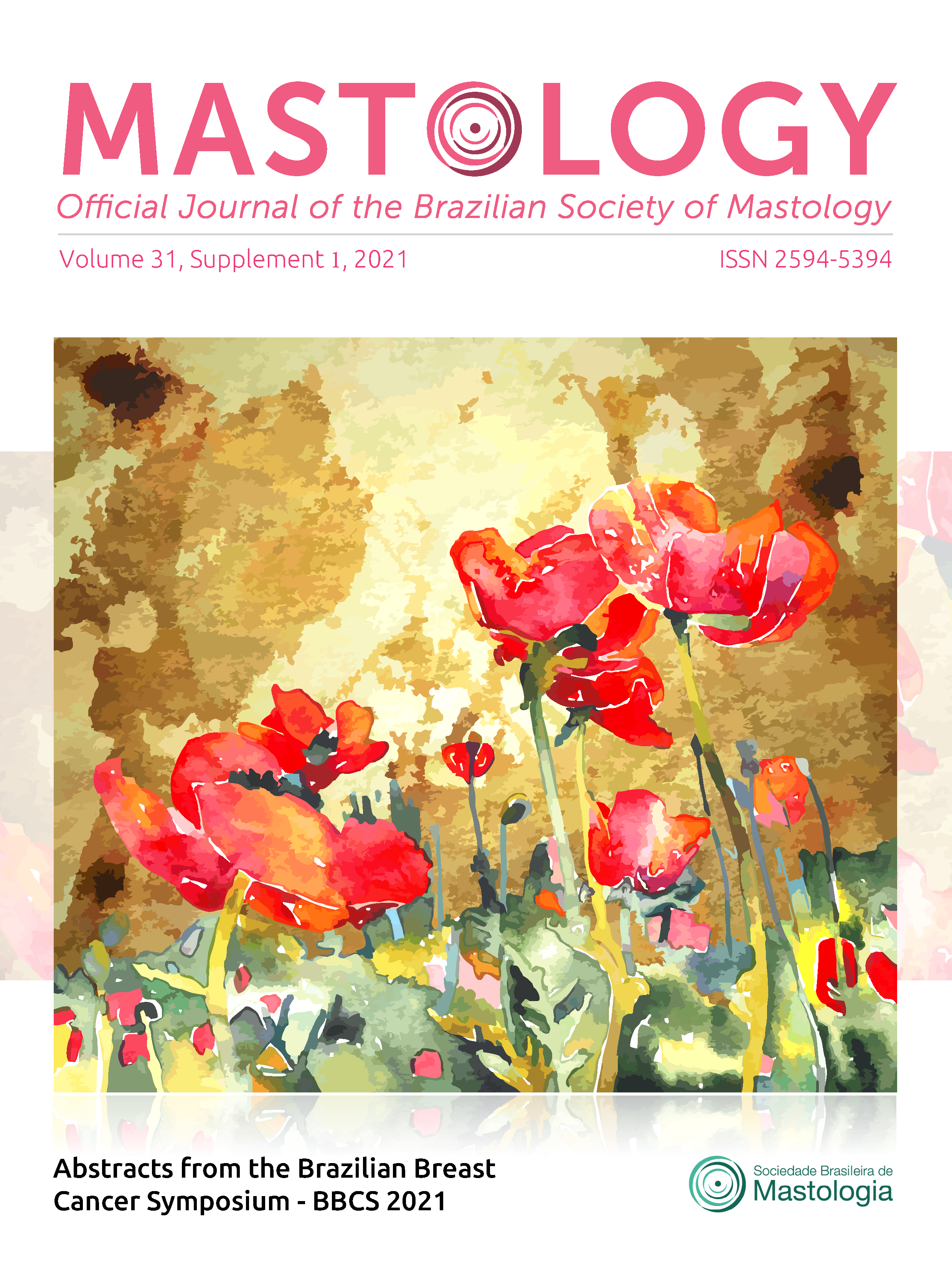LOBULAR BREAST CARCINOMA
THE RISK FOR CONTRALATERAL BREAST IS NOT PERMANENT
Abstract
Introduction: The invasive lobular carcinoma of the breast occurs in approximately 10% of breast cancers. The increased risk for multicentric and bilateral breast tumor is well-documented in the literature, but few data is available regarding the interval for occurrence of contralateral tumors. Objectives:This study aims to analyze the characteristics of the bilat- erality of the lobular tumor and time to the occurrence of the bilateral tumor in comparison with non-lobular tumors. Methods: Retrospective, analytical study from the American Surveillance, Epidemiology and End Results Program (SEER) database. Patients with unilateral and bilateral breast cancer (synchronous and metachronous) were filtered from this database in women aged 20 to 75 years from 2000 to 2017. Patients with cancers diagnosed in other organs were excluded. Definitions: Lobular carcinoma at the first diagnosis (LC): patients with lobular breast cancer at the diagnosis of the first neoplasm. Non-lobular carcinoma (NLC): patients with non-lobular carcinoma (ductal or special type) at diagnosis of the first neoplasm. Results: We identified 560,608 patients with breast cancer, 19,792 of which were patients with bilateral tumors (3.5%) and 45,156 (8.0%) lobular tumors at the first diagnosis. Patients with LC had significantly more tumors in both breasts throughout the research period (6.3% vs. 3.3%; OR: 1.97; 95%CI 1.89–2.06, p<0.001). The time for occurrence of contralateral tumor varied widely between patients with lobular and non-lobular tumors. The LC patients presented the diagnosis of contralateral breast tumor much earlier, with 50% of the contralateral tumors diagnosed within one month, and 75% in the first three months, while the NLC patients presented 50% of the contralateral tumors in the first three months and 75% after 54 months of follow-up. Cox’s multivariate analysis shows a higher risk of contralateral breast involvement in LC patients when corrected by age and estrogen receptor expression (RR 2.0; 95%CI 1.93–2.09; p<0.001). This increased risk is not sustained when patients with a tumor in an interval greater than 12 months (RR 1.04; 95%CI 0.96–1.14; p=0.3). Conclusions: Invasive lobular carcinoma is associated with a higher incidence of contralateral disease, but the higher risk occurs in the first year of follow-up. After the one-year period, the incidence of contralateral breast cancer is similar in lobular and non-lobular cancers.
Downloads
Downloads
Published
How to Cite
Issue
Section
License
Copyright (c) 2021 Andrei Alves de Queiroz, Debora Garcia y Narvaiza, Ana Maria Kemp, Gisele Tolaini Gomes Pereira, Vanessa Ribeiro Lopes

This work is licensed under a Creative Commons Attribution 4.0 International License.







